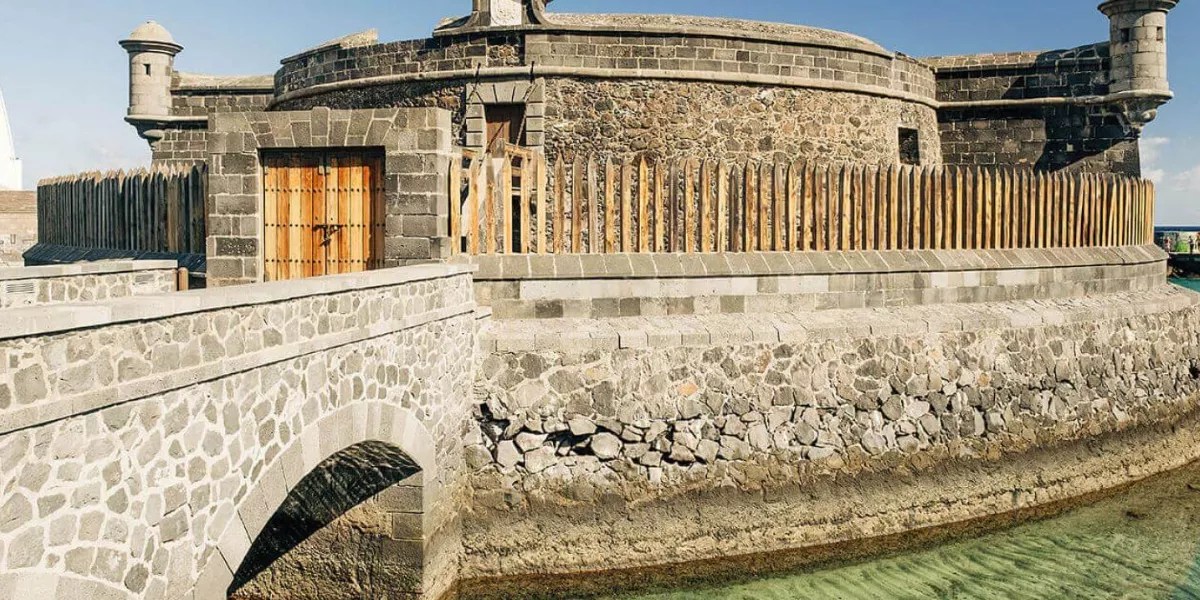The Fortifications of Santa Cruz: An Iconic Symbol of Tenerife’s History

A Historical Defence
Coastal fortifications are a significant part of the historical memory of many ports around the world. For centuries, they served as guardians against pirate attacks and foreign invasions—solid constructions that now seem closer to cinematic fantasy than military reality. However, one of the most notable examples lies in the heart of the Canary archipelago.
This 17th-century edifice, built from dark stone and designed in a circular shape, surprises all who behold it. Its appearance is reminiscent of classic fairy tale castles or Disney films, yet it was, in fact, a crucial defensive bastion for the island for over three centuries.
The Black Castle
Popularly known as the Castillo Negro, its official name is Castillo de San Juan Bautista, located in Santa Cruz de Tenerife. Construction commenced in 1641 when the island was vulnerable due to the Portuguese uprising and the threat of maritime attacks. Under the direction of the sergeant major, Juan Fernández Franco, the structure was completed in 1643, becoming the second most important fortress in the city.
Circular in design with a diameter of approximately 30 metres, the castle was built next to the Caleta de Negros, which likely explains its nickname. The walls, made of volcanic stone and up to two and a half metres thick, rendered it almost impregnable against assaults.
A Symbol of Power
Beyond its defensive role, Castillo de San Juan Bautista also symbolised social prestige. In 1684, King Charles II granted the Cabildo authority to appoint the fortress governor, a position sought after by the nobility of the time. This role not only ensured nobility status but also entailed privileges such as controlling the port, levying taxes, and mediating disputes among fishermen.
The fort was the setting for the Gesta of 25 July 1797, when local troops successfully repelled an attack by the British fleet led by Admiral Horatio Nelson. This episode is commemorated each year in Santa Cruz as a tribute to the city’s resilience.
Between Modernity and Tradition
Today, the castle stands amidst contrasts: on one side, the modern Auditorio de Tenerife; on the other, the César Manrique Maritime Park. This site combines the history of yesteryear with contemporary architecture, becoming an iconic landmark within the urban landscape of the Tenerife capital. While access to the interior is restricted, the exterior is open to the public, allowing visitors to admire this fortress, designated a Cultural Asset of Interest in 1993.
Its open spaces, embrasures, and walls evoke the military power of another age while simultaneously recalling settings typical of fantasy films.
A Preserved Legacy
For centuries, the Castillo Negro was intertwined with coastal defence, as well as with the city’s administrative and social life. After experiencing various stages of deterioration, it was restored in 1982 by the Santa Cruz de Tenerife City Council, which has maintained it in good condition. Today, more than just a military bastion, it stands as a heritage symbol and a tourist attraction, delighting both visitors and locals alike.
An architectural gem that, despite its defensive origins, has secured a place in the collective imagination as one of the most spectacular castles in the Canary Islands.















